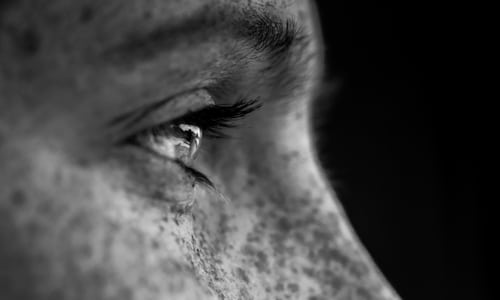The Psychodynamic Approach to Counselling
The psychodynamic approach to counselling is a form of psychotherapy with its roots in traditional psychoanalysis, which was pioneered by Austrian neurologist Sigmund Freud as a clinical method for treating psychopathology, a term meaning mental disorders.
Freud believed that we are governed by subconscious drives and conflicting parts of our personality which he labelled the id, ego and super ego. This tripartite personality sees the id as the needy uncontrolled part of ourselves. The ego, on the other hand, is our adult self trying to rein in the childish self-destructive desires of the id.

Freud himself observed:
One might compare the relation of the ego to the id with that between a rider and his horse. The horse provides the locomotor energy, and the rider has the prerogative of determining the goal and of guiding the movements of his powerful mount towards it. But all too often in the relations between the ego and the id we find a picture of the less ideal situation in which the rider is obliged to guide his horse in the direction in which it itself wants to go.
- From the New Introductory Lectures on Psychoanalysis, 1932.
The super ego could be compared to a super parent, berating the ego, forcing it to comply with societal norms. So according to the theory, our self-concept is in constant conflict, with the poor old ego trying to balance the childish impulse of the id and the critical demands of the super ego.
Modern psychoanalysis was born out of Freud's ideas. In the 1950’s Canadian psychiatrist Eric Berne was working as a psychiatrist in Carmel California. He noticed in his patient’s district patterns of relating to life events.
Berne, who had been trained in classic psychoanalysis, took the main tenants of the theory and developed his own perspective on it, which he named Transactional Analysis (TA for short).
While there are many theoretical overlaps between the psychodynamic approach and psychoanalysis, there are differences in the practice of the two modalities.
Psychodynamic Therapy vs Psychoanalysis
Main Similarities
-
- Theory - Psychodynamic therapists align themselves theoretically with psychoanalytic thinking. There is emphasis on bringing unconscious processes into awareness; areas of focus such as transference/countertransference and early life experiences are likely to be touched upon in both psychoanalysis and a psychodynamic approach to counselling.
-
- Techniques - A psychodynamic therapist may draw upon psychoanalytic techniques in their work with a client. Free association and dream interpretation are commonly used in both psychoanalysis and psychodynamics as a means to explore the unconscious.
-
- Bringing the subconscious in to the here and now - Both theories help the client understand how decisions subconsciously made in childhood are carried through in to our adult lives.
- Tripartite view of personality – Freud's theory was based on id, ego and super ego Berne developed this idea and simplified the terms naming the parts of the personality parent, adult, child.
- A Taught Model – Modern psychoanalytical approaches such as Transactional Analysis put the therapist in the role of an ‘enquiring teacher’ whose role it is to help inform the client of how past events or childhood experiences may be enacted in the here-and-now as an adult. The focus of the therapy is to strengthen the adult ego state.
Main Differences
- Intensity – Traditional psychoanalysis is a very intensive form of therapy, often involving three or four sessions per week. Some clients working with a psychodynamic therapist may attend more than once per week, however a psychodynamic approach is typically less intensive and less frequent than psychoanalysis.
- Relationship – Famously, traditional psychoanalysis is often thought of as an entirely one-way process, where the therapist acts as a “blank slate” for the projections of the client to emerge upon. Most modern psychotherapies accept that the relationship between therapist and client forms an important part of the work, and psychodynamic therapy is no exception. A psychodynamic therapist is likely to explore what is happening in the relationship in the here-and-now, and to view therapy as a relational process.
- Interpretation – In traditional psychoanalysis, the therapist is seen as ‘expert’, and their role is largely to interpret what the client is expressing, to uncover and highlight underlying unconscious processes. In a psychodynamic approach to counselling, there is likely to be an element of interpretation, however a psychodynamic therapist is also likely to offer interventions which convey unconditional positive regard, or a sense of nurturing, as greater emphasis is placed on the quality of the relationship.
Free Handout Download
Key Theory in Modern Psychoanalytical Approaches
Key Concepts
The Role of the Unconscious
The psychodynamic approach to counselling aims to help clients to develop their self-awareness by exploring what is happening in their process at an unconscious level.
Relevant psychoanalytic concepts such as defence mechanisms; the Jungian concept of shadow; psychosexual stages; and ego, superego and id are likely to form a part of how a psychodynamic therapist makes sense of the material the client brings.
A psychodynamic therapist will work with the client to explore their responses and to bring their unconscious selves into conscious awareness. Carl Jung called this process Individuation.
Transference and Countertransference

Psychodynamic therapy often involves paying attention to transference and countertransference responses which occur in the therapeutic relationship. Transference refers to the feelings that a client develops towards a therapist, which typically mirror relational dynamics and feelings from past relationships.
Exploring the responses that a client is experiencing towards a therapist can allow deeper exploration of the ways in which past experiences are influencing the client’s here-and-now relating and bring unconscious or repressed feelings to light in the therapeutic relationship where they can be safely explored and processed.
Countertransference can be used to describe feelings which the therapist develops towards the client.
Countertransference is a complex phenomenon; there is likely to be a mixture of here-and-now feelings and feelings with their basis in the therapist’s past experiences which make up part of the therapist’s unconscious response to the client, but also, the therapist may unconsciously develop feelings in response to the client’s transference – this is where countertransference emerges and may be useful to the therapeutic work.
All of this may play out at an unconscious level in the relationship, and it is through appropriate exploration and self-reflection that it can become rich material for psychodynamic therapy.
Overview
Psychodynamic counselling tends to be a longer-term approach which involves deep exploration of self. It is suitable for clients who wish to explore their inner-selves at depth, or who have difficulties in their lives and relationships with no obvious cause.
A psychodynamic approach to counselling is inherently relational and views the emergence of unconscious material within the therapeutic relationship as inevitable. Typically, psychodynamic therapy will involve a mixture of directive and non-directive approaches, employing some psychoanalytic technique, but also allowing space for the client to navigate their way through their own unconscious.
Psychodynamic therapy is a ‘whole life’ approach where you explore the life process and interactions that made you who you are. It also helps you consider what you want to change.
References
New Introductory Lectures on Psychoanalysis. Freud, S. (1933). New Introductory Lectures on Psychoanalysis. Oxford, England: Norton & Co.
This article was written for Counselling Tutor by Erin Stevens.